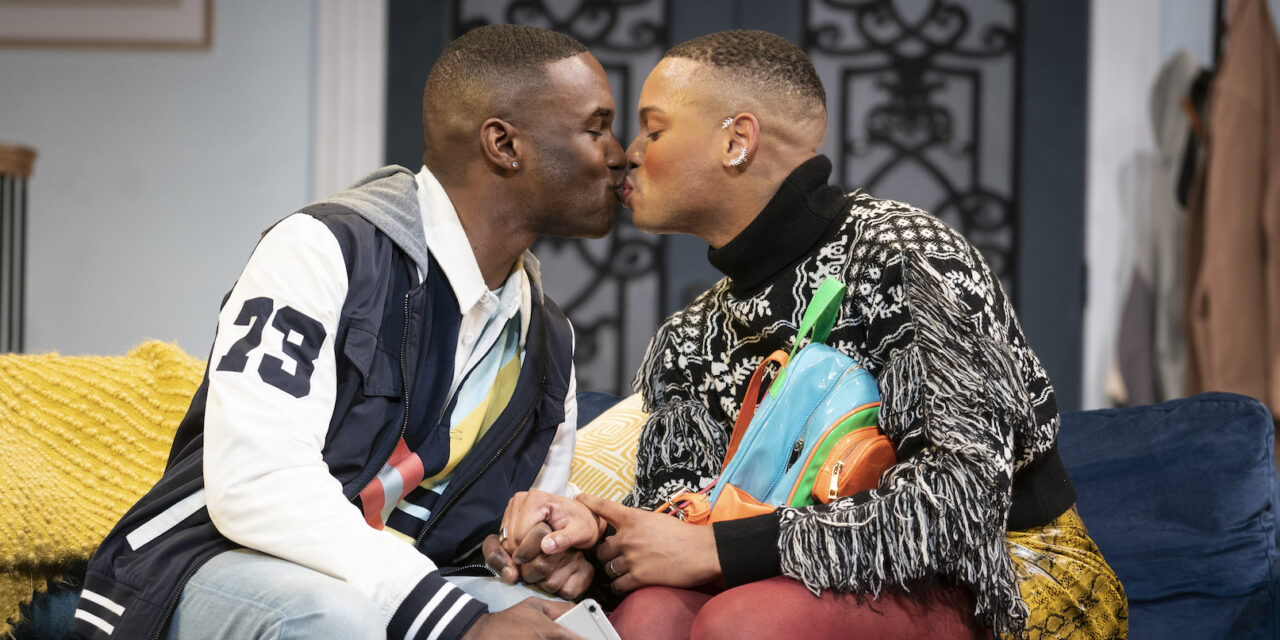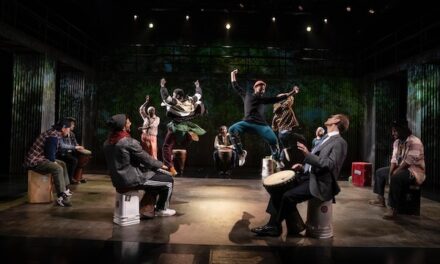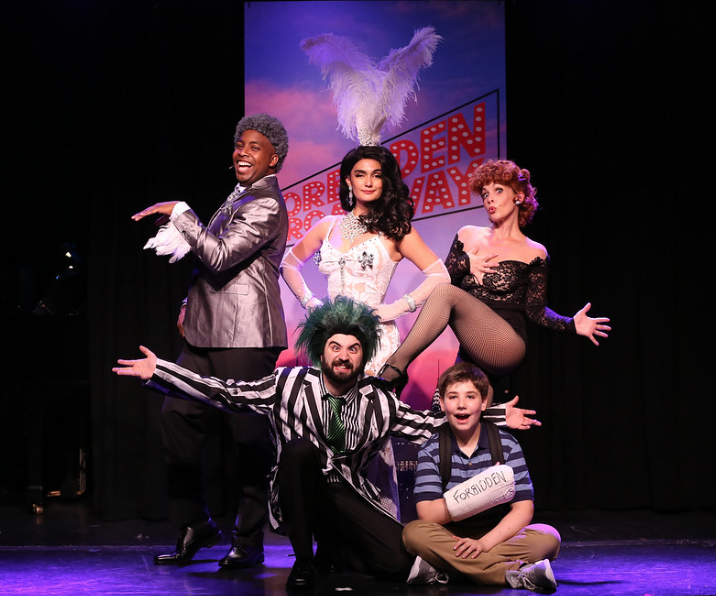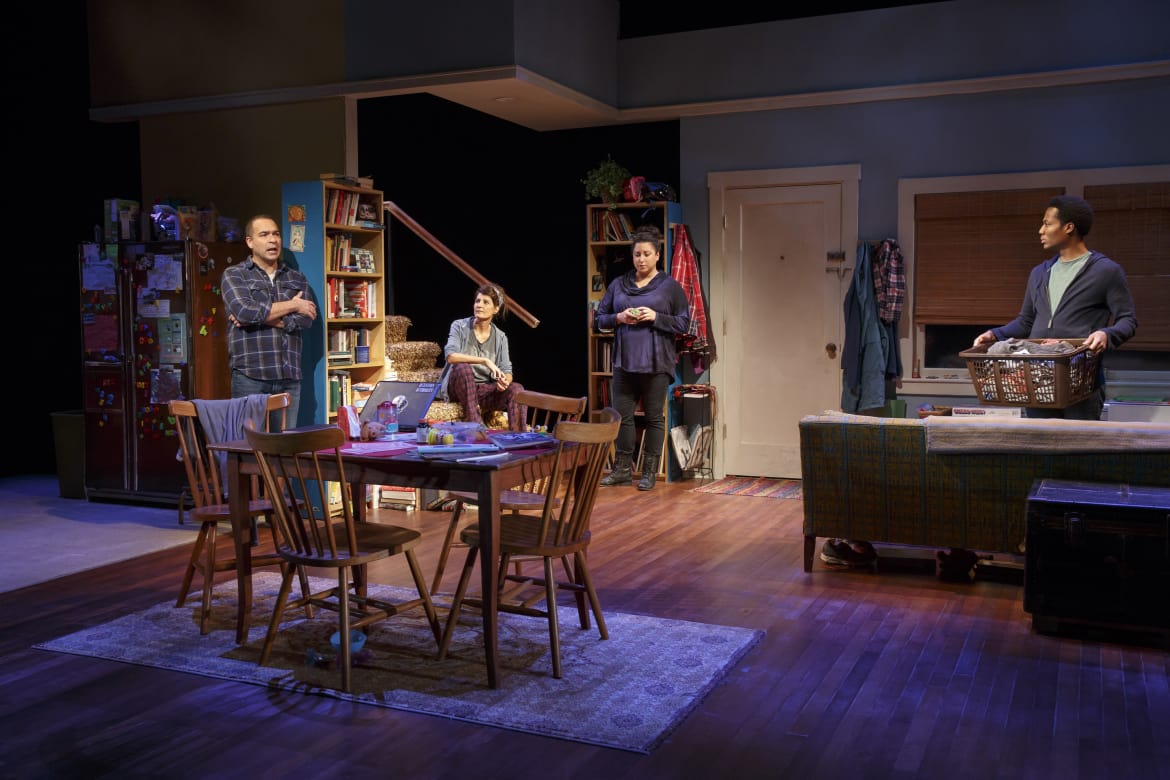By Brian Scott Lipton . . .
What does it mean to be a gay black male in America today? It’s a question that’s been pondered on many New York stages this past season, in shows ranging from A Strange Loop to Thoughts of a Colored Man to A Case for the Existence of God. Now, playwright Mansa Ra is adding his perspective to the issue in …what the end will be, which is receiving a well-acted production under Margot Bordelon’s direction at the Roundabout’s Laura Pels Theatre.
Here, that thorny, topical question is examined through the lives of four very different, interconnected men, each of whom grapples with his sexual identity differently. The elderly, terminally ill, no-nonsense Bart (an excellent Keith Randolph Smith) is remarkably up-front about being gay—even openly sniffing the boxer shorts of his late husband—but expresses his regrets of not accepting his sexuality earlier in life.
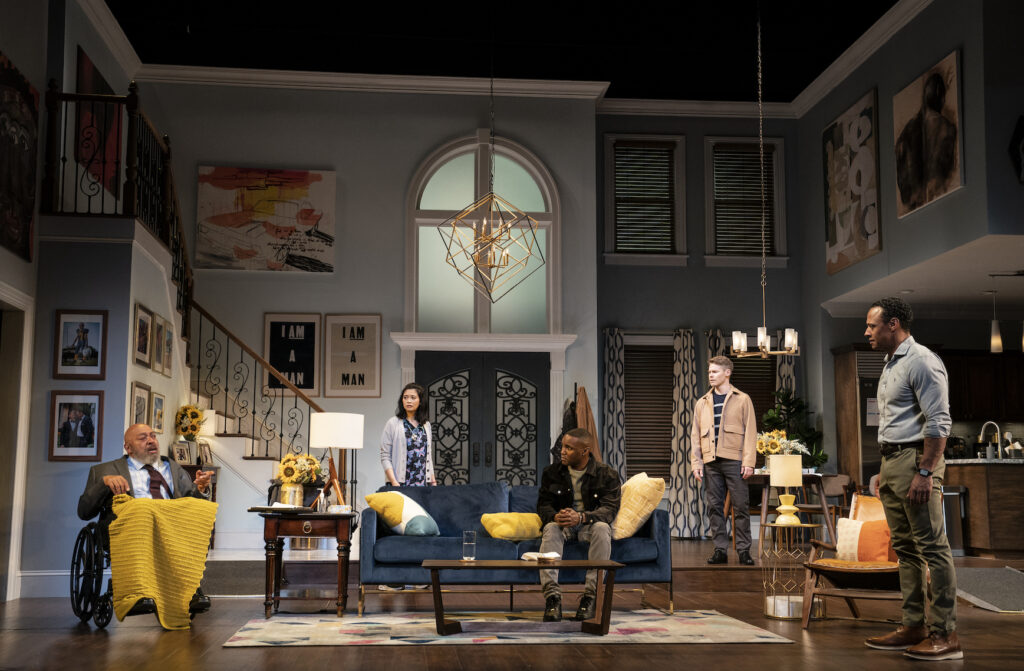

His son, Maxwell (a convincing Emerson Brooks), is also gay, but obviously still struggles with his orientation. He’s still closeted in his high-powered workplace, afraid he’ll lose power (or even his job) if his boss finds out that his white husband, Charles (a very good if underused Randy Harrison), is more than his “gym partner.” In addition, while at the couple’s gorgeous Atlanta home (beautifully designed by Reid Thompson), Maxwell engages in heavy drinking and displays bouts of anger that frighten Charles so much that he temporarily moves out.
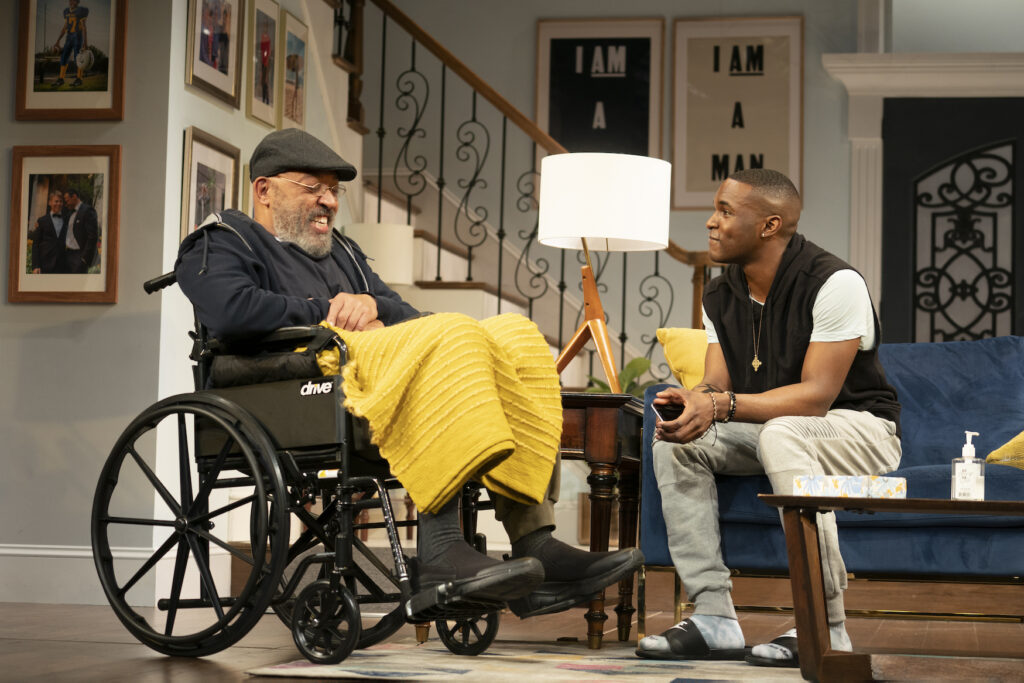

Maxwell—who, like his father, was once married to a woman—also frequently loses his temper around his 18-year-old son, the high school football star Tony (a very fine Gerald Caesar), whom he assumes is straight. But, again, this apple doesn’t fall far from the family tree. Tony, who seems to have maybe just discovered his “true self,” is romantically involved with the effeminate, cross-dressing Antoine (Pose star Ryan Jamaal Swain, who walks off with the show)—who proves to be the character most comfortable in his own skin.
The often-fractious interplay among these men is decidedly believable and provides a fascinating look into societal notions of masculinity (toxic and otherwise), even if not everything Ra has to say is new. Nonetheless, Ra seems to have enough insight on this subject to fill a one-act play.
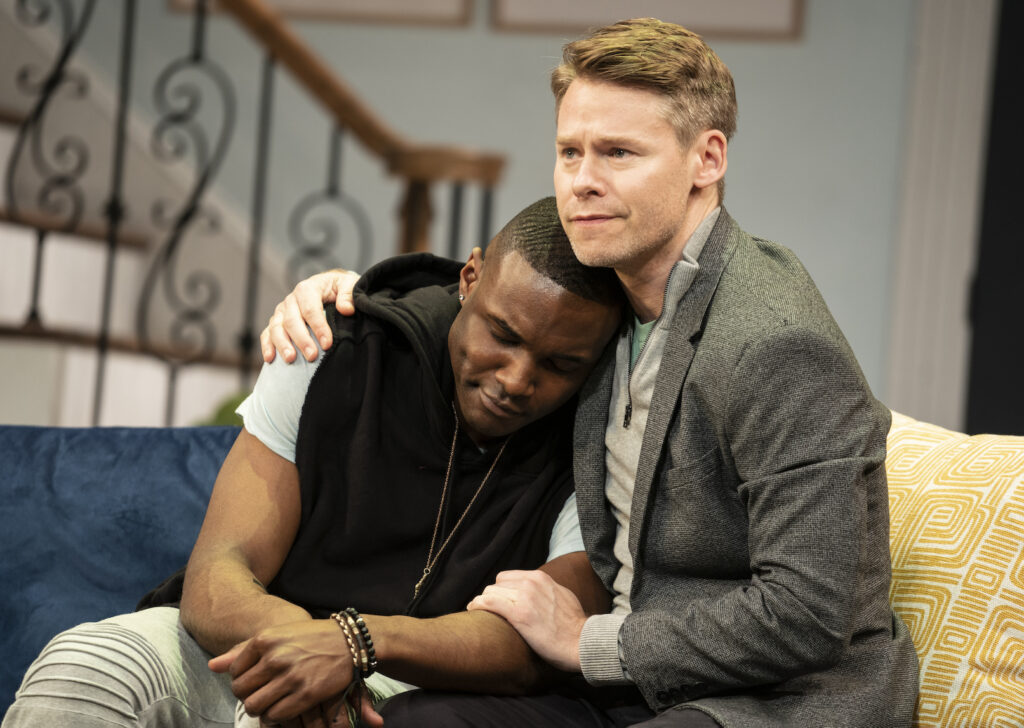

That’s why it’s rather shocking that partway through the work, he tackles an even weightier subject (spoiler ahead): Bart’s right to die with dignity. This smallish section of the play turns out to be the most moving and most interesting part of the play (you can hear some of the audience sniffling), but the subject belongs in another play. What’s more, Ra’s insistence in returning to—and partially resolving—his main issue ultimately feels awkward and slightly forced.
Rather sentimentally, as well, Bart gets the piece’s final moment. While quite touching, I think it’s the wrong ending to …what the end will be.
…what the end will be. Through July 10 at the Laura Pels Theatre in the Harold and Miriam Steinberg Center for Theatre (111 West 46th Street, between Sixth and Seventh Avenues). www.roundabouttheatre.org
Photos: Joan Marcus


